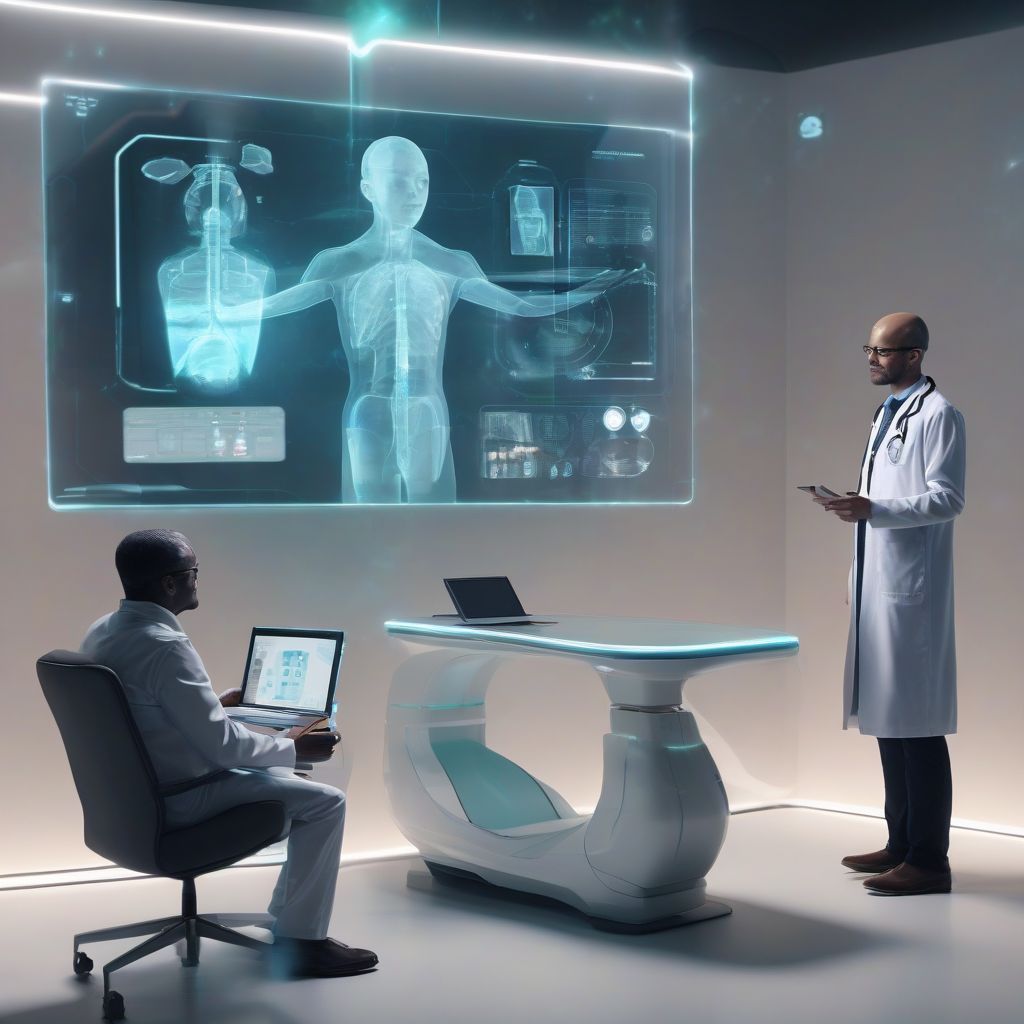Imagine waking up one morning, feeling a little under the weather, but instead of dragging yourself to a crowded doctor’s office, you simply open your laptop or phone. With a few clicks, you’re face-to-face with your doctor, discussing your symptoms and receiving a diagnosis, all from the comfort of your own home. This isn’t science fiction; it’s the rapidly approaching future of telemedicine and remote healthcare services.
Transforming Healthcare Delivery
Telemedicine, the practice of delivering healthcare services remotely using technology, has been steadily gaining traction for years. However, recent advancements in technology and shifts in societal needs have propelled it into the spotlight, promising a future where healthcare is more accessible, affordable, and patient-centered. This evolution is not merely a trend; it’s a fundamental shift in how we approach healthcare delivery.
Expanding Access to Care
One of the most significant benefits of telemedicine is its ability to bridge geographical barriers. For individuals living in rural areas or those with mobility challenges, accessing specialists or even routine checkups can be difficult. Telemedicine removes these obstacles, bringing healthcare directly to the patient, regardless of location. This increased accessibility is particularly crucial for managing chronic conditions, where regular monitoring and consultations are essential.
Enhanced Convenience and Flexibility
In today’s fast-paced world, convenience is key. Telemedicine offers unparalleled flexibility, allowing patients to schedule appointments at times that fit their busy schedules, eliminating travel time and costs associated with traditional in-person visits. This ease of access can lead to greater patient engagement and improved adherence to treatment plans.
Cost-Effectiveness and Efficiency
From a financial perspective, telemedicine offers significant potential for cost savings. By reducing the need for physical infrastructure and streamlining administrative processes, healthcare providers can deliver care more efficiently. This can translate into lower healthcare costs for both patients and providers, making healthcare more affordable and sustainable.
 Future of Telemedicine and Remote Healthcare Services
Future of Telemedicine and Remote Healthcare Services
The Role of Technology
The future of telemedicine is inextricably linked to technological advancements. From artificial intelligence (AI) to virtual reality (VR), emerging technologies are poised to revolutionize how we deliver and receive healthcare.
AI-Powered Diagnostics and Treatment
AI algorithms are increasingly being used to analyze medical images, predict patient outcomes, and personalize treatment plans. This ability to leverage vast amounts of data can lead to earlier diagnoses, more accurate treatments, and improved patient outcomes. Imagine a future where AI can predict the likelihood of developing certain diseases based on your genetic predisposition and lifestyle factors, allowing for proactive interventions.
Virtual Reality and Augmented Reality
VR and AR technologies are creating immersive experiences that can be used for everything from pain management to surgical training. Imagine undergoing physical therapy in a virtual environment that simulates real-world scenarios or surgeons practicing complex procedures in a virtual operating room. These technologies offer exciting possibilities for enhancing both patient care and medical education.
The Internet of Medical Things (IoMT)
The IoMT connects medical devices and wearables to the internet, allowing for continuous monitoring of patient vital signs and other health data. This real-time data flow can provide valuable insights into patient health, enabling early detection of potential problems and facilitating proactive interventions. This interconnectedness can empower patients to take control of their health and actively participate in their care.
Challenges and Opportunities
While the future of telemedicine is bright, it’s important to acknowledge the challenges that lie ahead. Addressing these challenges will be crucial for realizing the full potential of remote healthcare.
Data Security and Privacy
With the increasing reliance on technology, ensuring the security and privacy of patient data is paramount. Robust cybersecurity measures and strict adherence to privacy regulations will be essential to maintain patient trust and protect sensitive information.
Regulatory Landscape
The regulatory landscape for telemedicine is constantly evolving. Clear guidelines and standardized practices are needed to ensure the quality and safety of remote healthcare services. Collaboration between healthcare providers, policymakers, and technology developers will be crucial to navigate this evolving landscape.
Digital Divide
The digital divide, the gap between those who have access to technology and those who don’t, poses a significant challenge to equitable access to telemedicine. Efforts to bridge this divide, such as expanding broadband access and providing digital literacy training, will be crucial to ensuring that everyone can benefit from the advancements in remote healthcare.
The Future is Now
The future of telemedicine and remote healthcare services is not some distant dream; it’s happening now. From virtual consultations to AI-powered diagnostics, technology is transforming healthcare delivery at an unprecedented pace. As we navigate this exciting new frontier, it’s crucial to embrace innovation, address challenges proactively, and work collaboratively to create a future where healthcare is more accessible, affordable, and patient-centered.
Conclusion
The journey towards a digitally-driven healthcare landscape has just begun, and telemedicine is at its forefront. We’ve explored the transformative potential of remote healthcare, from its ability to expand access to care and enhance convenience to the revolutionary role of technologies like AI, VR, and IoMT. While challenges like data security and the digital divide exist, the opportunities for innovation and improved patient outcomes are immense.
As we move forward, embracing a patient-centric approach and fostering collaboration among stakeholders will be key to unlocking the full potential of telemedicine. This involves not only adopting new technologies but also addressing ethical considerations, ensuring data privacy, and promoting digital literacy. The future of healthcare is not just about technology; it’s about empowering individuals to take control of their health and well-being, regardless of their location or circumstances.
We encourage you to share your thoughts and experiences with telemedicine in the comments below. What are your hopes and concerns for the future of remote healthcare? Let’s continue the conversation and shape the future of healthcare together.



